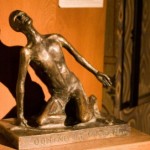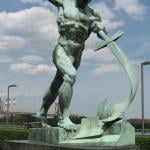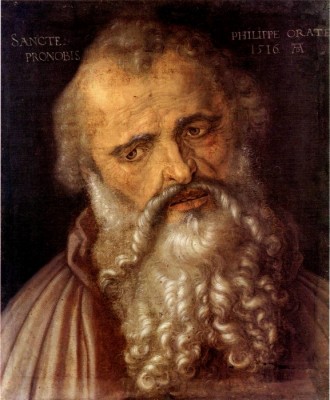 When Jesus calls disciples, he is not seeking a balance of perfect qualities that will create a winning team. He is not seeking to win titles, awards, or the world’s approval, through his disciples. He calls them to come along with him, to learn from him how to be irreverent, and in being that, become God’s own.
When Jesus calls disciples, he is not seeking a balance of perfect qualities that will create a winning team. He is not seeking to win titles, awards, or the world’s approval, through his disciples. He calls them to come along with him, to learn from him how to be irreverent, and in being that, become God’s own.
About most of the disciples we know nothing except their names, or perhaps a derisive nickname (the Sons of Thunder, the Rock). Peter, whose inclination toward reverence was particularly strong, was often the last to catch Jesus’ drift, as Jesus parodied the reverence of his day, in stories, gestures, deeds (breaking the Sabbath laws, the cleanliness laws, the gender laws). Jesus’ point was to show the difference between fake piety and real devotion, between kingdoms of exclusion and the inclusive world of God, between hating sins and loving sinners.
 We’ve spent a week now, watching in horror as three young French Moslems, who had imbibed a narrative of religious fascism, gunned down civilians in Paris, cartoonists whose crimes were penning caricatures of the Prophet, and people buying groceries, whose crimes were being Jewish.
We’ve spent a week now, watching in horror as three young French Moslems, who had imbibed a narrative of religious fascism, gunned down civilians in Paris, cartoonists whose crimes were penning caricatures of the Prophet, and people buying groceries, whose crimes were being Jewish.
The thread of the news has carried, along with the details of crimes and police actions, this question: did the magazine Charlie Hebdo, which ran the cartoons, go too far in its irreverence? There were strong objections by many Moslems. The fundamentalists had vowed revenge and encouraged assassinating the cartoonists. One issue, often mentioned, ran a cartoon of the Prophet nude and used his name as the editor of the issue.
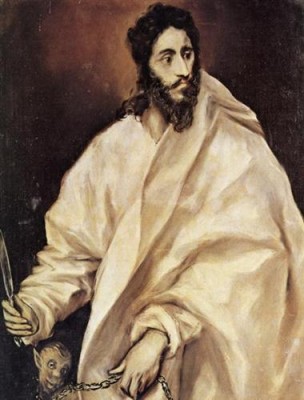 On Friday night David Letterman’s Late Show re-ran a fake video of the Pope, walking down a beach wearing only his Speedo and his miter (tall hat). A year ago, when the Pope was consecrated, Letterman had a man dressed in Pope-robes and hat ride on stage on a horse. The Gaucho Pope, Letterman called out. There’ve been jokes about the Pope’s statements on celibacy, his buying a used car, etc. The audiences find this hilarious. And there must be Catholics who find any kind of humor about the Pope offensive.
On Friday night David Letterman’s Late Show re-ran a fake video of the Pope, walking down a beach wearing only his Speedo and his miter (tall hat). A year ago, when the Pope was consecrated, Letterman had a man dressed in Pope-robes and hat ride on stage on a horse. The Gaucho Pope, Letterman called out. There’ve been jokes about the Pope’s statements on celibacy, his buying a used car, etc. The audiences find this hilarious. And there must be Catholics who find any kind of humor about the Pope offensive.
Free Speech, by definition, is speech someone will find offensive. But poking fun, which knocks holes in somebody’s reverence, is not the same thing as vilifying someone. And Jesus is a great example of the difference. He was a Jew, he honored his tradition, he loved God. And because he was what he was and did what he did, he poked a lot of fun at the ways in which we turn holiness into pomp and circumstance, turn a day of rest into a day of suffering, and allow the symbols of faith to become standards of punishment in our courtrooms.
 The really offensive cartoon in the New Testament is INRI, the sign carved for Jesus’ cross: Jesu Nazarenus, Rex Iudiorem, or Jesus Christ, King of the Jews. It was a reaction to Jesus’ greatest irreverence, the Palm Sunday procession in which he mocked Pilate’s grand entry into Jerusalem, which scholars now think was taking place at a different gate into the city. Jesus, on his donkey, mocking Pilate, on his war stallion. Jesus’ followers, waving palm branches, mocking Pilate’s army waving swords. But, you know, if they hadn’t killed him when they hung it on him, it wouldn’t be such an offense. And that’s the difference between free speech and hate speech, what harm you do with it.
The really offensive cartoon in the New Testament is INRI, the sign carved for Jesus’ cross: Jesu Nazarenus, Rex Iudiorem, or Jesus Christ, King of the Jews. It was a reaction to Jesus’ greatest irreverence, the Palm Sunday procession in which he mocked Pilate’s grand entry into Jerusalem, which scholars now think was taking place at a different gate into the city. Jesus, on his donkey, mocking Pilate, on his war stallion. Jesus’ followers, waving palm branches, mocking Pilate’s army waving swords. But, you know, if they hadn’t killed him when they hung it on him, it wouldn’t be such an offense. And that’s the difference between free speech and hate speech, what harm you do with it.
Even the killing of Jesus is the subject of jokes. And most of the ones I know I learned from my pastor, when I was in high school. He would tell them to us on Good Friday, in between the segments of the Seven Last Words services that were common then, and our high school choir would sing at a couple of them. When we asked him, in between gales of laughter, how he could joke about this, he said it was important that we never take the evils empires do so seriously that we cannot laugh. This is the work of Christians: to laugh at empires and break their rules in a loving irreverence for God, and to embrace the excluded in a loving reverence for God.
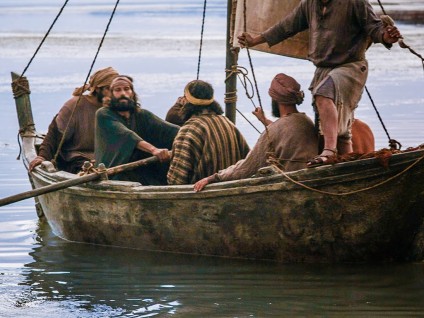 When Philip told Nathanael to come along with Jesus, Nathanael wanted to know: Can anything good come out of Nazareth? And Philip said to him, Come and see.
When Philip told Nathanael to come along with Jesus, Nathanael wanted to know: Can anything good come out of Nazareth? And Philip said to him, Come and see.
That is still our invitation – not to bow done in hushed subservience, nor to obey rules about our bodies and minds that deny our spirits; not to come to what someone else has seen, or proclaimed, or expects to see – but, with our own eyes, to see beyond the shocking and the petty fascisms of our time, which demand solemnity and the bending of the knee as acts of respect, to come away from that into a world where the Spirit ripples with humor and goodwill for all people, a world where The Pope wears a Gaucho hat and drives a beat up old car, and the Prophet Mohammed has a few good jokes to tell that we haven’t heard yet.
_____________________________________________________
Illustrations:
1. The Apostle Philip, by Albrecht Durer, 1508, Rome. Vanderbilt Divinity School Library, Art in the Christian Tradition.
2. Charlie Hebdo magazine covers, Google Images.
3. Nous Sommes Charlie poster. Google Images.
4. St. Bartholomew/Nathanael by El Greco. WikiArt Encyclopedia of Art.
5. INRI. Clip Art. Google Images.
6. Disciples in Boat. from FreeBibleImages. com




